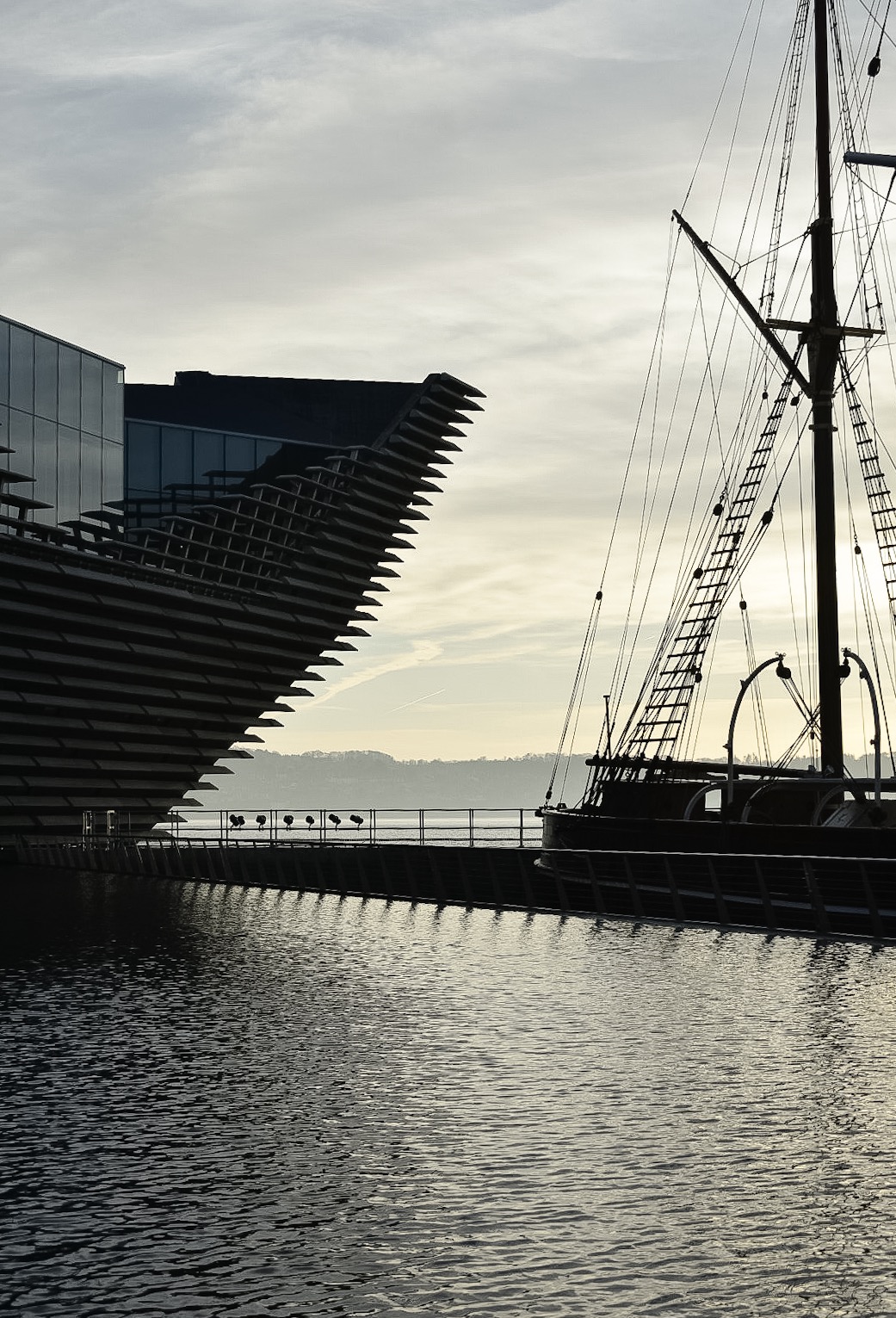I’ve visited Dundee many times over the course of the last 12 years or so since meeting my husband, who was born and grew up in nearby St Andrews. He is a longtime supporter of one of the two Dundee football teams (I won’t say which one — the local rivalry is pretty fierce) and so I’ve spent many a cold winter’s afternoon in Dundee watching the football and learning exactly what a macaroni pie is.
So when I heard a couple of years ago that the Victoria and Albert Museum had decided on Dundee as the location for the first design museum in the UK to be built outside London, I was keen to visit as soon as I could after it opened in September 2018.
Over the last couple of years you could begin to see the hulk of the building taking shape on the banks of the Firth of Tay, the body of water that separates Fife from Tayside, revitalising a waterfront that was once known for its shipbuilding — the Discovery, the boat that took Scott and Shackleton to the Antarctic in 1901, was built in the Dundee shipyards and is moored next to the new V&A, which from this vantage point resembles the prow of a ship.
During the nineteenth century Dundee was one of the wealthiest cities in the UK, known for the “three Js”: jute, jam and journalism. The jute industry arose because of Dundee’s whaling industry — whale oil, a by-product of whaling, makes the spinning of jute possible, and so from the 1830s a substantial jute industry grew up in the town. Dundee's association with jam stems from the supposed invention of marmalade by Janet Keiller in 1797. Mrs Keiller is said to have created the recipe after her husband bought a cargo of bitter Seville oranges from a Spanish ship. Her son James later industrialised the production of Dundee marmalade in the 19th century. And finally, journalism: family-owned publisher DC Thomson has been based in Dundee since the 19th century and publishes several newspapers and comics, including The Beano, The Dandy and The Broons. It’s still one of the largest local employers in the city.
All of this gives some context as to why Dundee, which reached the height of its prosperity in the nineteenth century, might be well suited to hosting an outpost of the Victoria & Albert Museum. The original V&A has stood in South Kensington for more than 150 years and is the world's largest museum of decorative arts and design.
The Dundee museum houses exhibits from the V&A’s permanent collections combined with loans from elsewhere. The highlights include The Oak Room, originally constructed by Scottish architect and desginer Charles Rennie Mackintosh in 1908 for a tearoom in Glasgow, and restored from over 700 original parts that were stored by Glasgow City Council for over 50 years, and the Scottish Design Galleries, which feature permanent design works from across Scotland. Currently the museum also hosts an excellent temporary exhibition on the golden age of ocean liners, called Ocean Liners: Speed and Style.
Designed by Japanese architect Kengo Kuma and drawing inspiration from the craggy cliffs around Arbroath on the northeast coast of Scotland, the museum drew crowds of over 100,000 in its first three weeks, far outstripping expectations. Part of the intention in building the museum was to create a public space for Dundonians and visitors, and there’s an excellent cafe and shop as part of the entrance hall. The disappointment, for me, was the lack of a view, apart from on designated viewing platforms. Given its impressive location overlooking the broad expanse of the Tay, I kept hoping for a glimpse of that view from inside the entrance hall, whose walls rise steeply on an angle. It seems a shame to deny visitors that sense of space and water and sky.
Dundee has gained an impressive landmark, and hopefully one that will help revitalise its waterfront and bring visitors to the city. It’s already being touted as a must-see destination by everybody from Lonely Planet, Conde Nast Traveller and Bloomberg to the Wall Street Journal, and I can only agree. It’s not the most obvious place people think to visit when planning a trip to Scotland, but it’s easy to get there from Edinburgh and Glasgow, and well worth at least a day trip.








